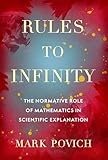Rules to infinity : the normative role of mathematics in scientific explanation / Mark Povich.
Publisher: New York, NY : Oxford University Press, [2024]Description: xv, 315 pages : illustrations ; 24 cmContent type:- text
- unmediated
- volume
- 9780197679005
- 9780197679036
- 9780197679029
| Item type | Current library | Status | Barcode | |
|---|---|---|---|---|
 Open Access Books - Publishers
Open Access Books - Publishers
|
National Law School | Available | OABP714 |
Includes bibliographical references (pages [291]-305) and index.
"A simplistic and Whiggish history of the philosophy of scientific explanation, modeled after a terribly stripped-down reading of Salmon's (1989) Four Decades, might go as follows: In the beginning was Hempel, with whose covering law (CL) model of explanation the main problems in the philosophy of explanation were thought, for the most part, to have been solved. There was peace in the land... for a while. Then came mumblings of discontent. For, most of the problems that faced the CL model resulted, many thought, from its inability to account for the central role of causation in scientific explanation. Mumblings magnified into roars and the CL model was burst asunder. A new account of scientific explanation - the causal-mechanical account (Salmon 1989) - gained hegemony, and peace and consensus returned. In the last couple of decades, mumblings of discontent have started again to arise: equilibrium explanations (Sober 1983, Rice 2015), optimality explanations (Rice 2012, 2015), renormalization group (RG) explanations (Batterman and Rice 2014), topological explanations (Huneman 2010, Kostić 2020, Kostić and Khalifa 2021) . How can the causal hegemony in the philosophy of explanation account for all these? The causal hegemony must give way to a new one, one that is either a more inclusive theory that covers both causal and non-causal explanation, or a principled explanatory pluralism"-- Provided by publisher.
There are no comments on this title.
